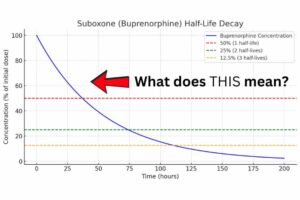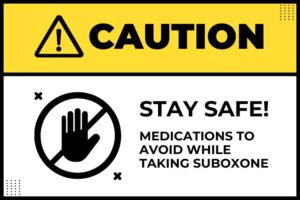Is it possible to become completely independent?
Medication-assisted treatment (MAT) has become a cornerstone in the fight against opioid addiction, offering a lifeline to individuals striving to reclaim their lives from the grip of dependency. Suboxone, a combination of buprenorphine and naloxone, is a widely used medication in MAT that helps reduce cravings and withdrawal symptoms, facilitating a smoother transition to recovery. While Suboxone is highly effective in supporting recovery, many patients and healthcare providers look forward to the day when the medication is no longer needed. This raises a critical question: Is it possible to eventually taper off Suboxone, and if so, how?
Understanding Suboxone
Suboxone works by binding to the same opioid receptors in the brain as drugs like heroin and prescription painkillers. It does so in a way that diminishes the euphoric effects, thus helping to prevent misuse. Buprenorphine, the active ingredient, is a partial opioid agonist, meaning it activates opioid receptors but to a much lesser degree than full agonists like heroin or oxycodone. Naloxone, on the other hand, is an opioid antagonist that blocks the effects of opioids and is included in Suboxone to deter misuse of the medication.
The Tapering Process
Tapering off Suboxone is a gradual process that should always be done under the supervision of a healthcare professional. The goal is to slowly reduce the dosage of Suboxone over time, allowing the body to adjust to lower levels of the medication and eventually function without it. Here’s a closer look at the steps to taper off Suboxone:
Assessment and Planning
A thorough assessment is conducted by the healthcare provider before the tapering process. This includes evaluating the patient’s stability in recovery, mental health status, and any co-occurring disorders. Based on this assessment, a personalized tapering plan is developed.
Gradual Dose Reduction
The tapering schedule typically involves small, incremental reductions in the Suboxone dose. The pace of tapering can vary significantly from person to person. Some may reduce their dose every few weeks, while others might taper more slowly. The key is to minimize withdrawal symptoms and maintain stability.
Monitoring and Support
Regular check-ins with the healthcare provider are crucial during the tapering process. Monitoring allows for adjustments to the tapering plan based on the patient’s response. Support services, including counseling and support groups, play a vital role in helping patients manage the psychological aspects of tapering.
Addressing Withdrawal Symptoms
Even with a gradual taper, some individuals may experience withdrawal symptoms. These can include anxiety, irritability, insomnia, and physical discomfort. Healthcare providers may recommend supportive treatments to alleviate these symptoms, ensuring the patient remains as comfortable as possible.
Long-term Recovery Planning
To taper off Suboxone is a significant milestone, but it is not the end of the recovery journey. Ongoing support, therapy, and engagement in recovery communities are essential to maintaining sobriety and preventing relapse.
Challenges and Considerations
To taper off Suboxone is achievable, but it is not without challenges. The process can be lengthy, and patients must be prepared for potential setbacks. The risk of relapse is a significant concern, highlighting the importance of a strong support network and continuous engagement in recovery activities.
Moreover, not all patients may be suitable candidates for tapering. Some individuals may benefit from long-term maintenance on Suboxone, particularly those with a history of chronic relapse or severe opioid use disorder. The decision to taper should be made collaboratively between the patient and their healthcare provider, considering all factors unique to the individual’s situation.
Conclusion
Tapering off Suboxone in a MAT setting is a viable goal for many individuals in recovery from opioid addiction. With careful planning, professional supervision, and robust support systems, patients can successfully reduce their dependence on medication and move toward a life of sustained sobriety. However, the journey is highly individual, and the primary focus should always be achieving the best possible outcome for the patient’s long-term health and well-being.
FAQs
What is Suboxone, and how does it work?
Suboxone is a medication used in medication-assisted treatment (MAT) for opioid addiction. It combines buprenorphine, a partial opioid agonist, and naloxone, an opioid antagonist. Buprenorphine activates opioid receptors to a lesser degree, reducing cravings and withdrawal symptoms without producing a significant euphoric effect. Naloxone prevents misuse by blocking opioid effects if the medication is tampered with.
How long does it take to taper off Suboxone?
The duration of tapering off Suboxone varies for each individual. Some may complete the process in a few months, while others might take a year or more. The tapering schedule is personalized based on the patient’s response, ensuring minimal withdrawal symptoms and stability.
What are the common withdrawal symptoms when tapering off Suboxone?
Common withdrawal symptoms during Suboxone tapering include anxiety, irritability, insomnia, muscle aches, and gastrointestinal discomfort. These symptoms can be managed with supportive treatments recommended by healthcare providers to ensure patient comfort.
Is tapering off Suboxone safe for everyone?
Tapering off Suboxone is not suitable for everyone. Some individuals with a history of chronic relapse or severe opioid use disorder may benefit from long-term maintenance on Suboxone. The decision to taper should be made collaboratively between the patient and their healthcare provider, considering the patient’s unique circumstances.
What support is available during the tapering process?
Support during the tapering process includes regular check-ins with healthcare providers, counseling, support groups, and access to recovery communities. These resources help manage the psychological and emotional aspects of tapering, providing a strong support network for patients.
Can Suboxone tapering prevent relapse?
Suboxone tapering can be a successful step in preventing relapse, especially when combined with ongoing support and therapy. However, relapse prevention is a continuous effort that requires a comprehensive recovery plan, including engagement in recovery activities and a strong support system.









